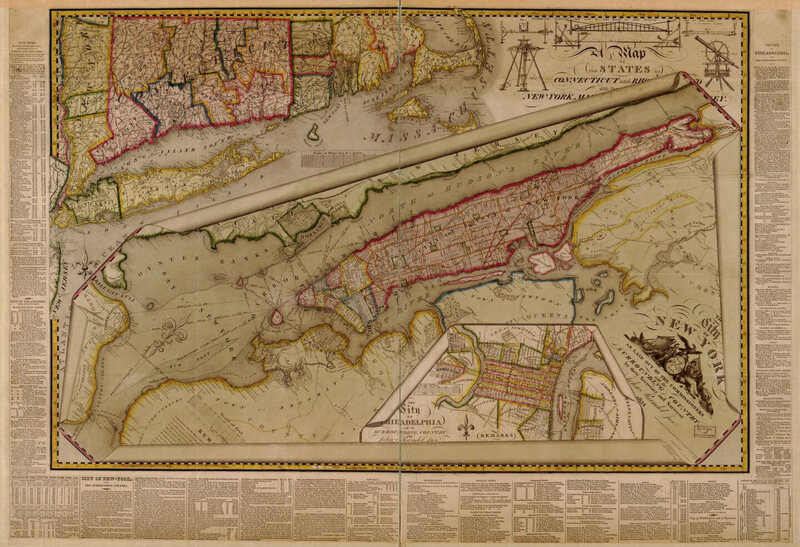Central Park secrets that you won’t find on a group tour

A few minutes every morning is all you need.
Stay up to date on the world's Headlines and Human Stories. It's fun, it's factual, it's fluff-free.
Central park in New York is kind of … hard to miss. Whether you want to go there or not, everyone who’s ever been to Manhattan has found themselves reaching at the wrought iron fence surrounding this square mile and half green space. It defines the city and is the focal point of any birds-eye view of the island itself.
Although there are the obvious activities to check out in Central Park, like racing model sailboats, there are plenty of Central Park secrets and lesser-known areas that stay tourist-free. We’ve got an insider’s guide to Central Park’s hidden secrets that will enhance your exploration. Make sure to give these Central Park secrets a visit, but keep it on the down low.
To see or not to see, that is the question
Shakespeare Garden is almost right in the middle of the park, on the west side. Even on the city’s worst days, it’s a picturesque plot of land, woven through with flora mentioned in Shakespeare’s works. Taking a stroll through this fantasy oasis, you’d be remiss to overlook some of Central Park’s great enigmas.
For instance, the Whisper Bench (officially the Charles B. Stover Bench), is located within Shakespeare Garden. At first, your gaze may be tempted to flit over this stone bench without scrutinization. However, stop and guide a friend to one end of the bench, and sit at the opposite end. A whisper spoken at one corner can be clearly heard from the other, as the architecture of the semicircle stone bench allows for sound to travel uniquely well. Because this bench is elevated, you also get the best views of the garden itself from its vantage point.
Another unique facet of Shakespeare Garden are the 10 plaques scattered around the flower beds, each one with a Shakespeare quote. Take a moment to enjoy the garden in full by trying to find every one. These Central Park secrets make for an integrated scavenger hunt for fans of the Bard.
New York’s lesser-known history
This next spot really shouldn’t be a secret, as it’s integral to the historical storytelling of New York City and of the United States as a whole. Still, many native New Yorkers don’t even know the story of Manhattan’s Seneca Village.
When plans for Central Park were finalized in the 1850s, Seneca Village, which housed a community of primarily African Americans and oppressed immigrants, was demolished. Prior to the park being built, Seneca Village was an area of unique financial stability and camaraderie among its residents, who were not respected by many of the residents of the city proper, which was focused further south in Manhattan at the time.
When Central Park began construction, New York acquired the land for Seneca Village through eminent domain, and its residents were forced to leave after being compensated. Currently, there’s an ongoing research campaign seeking information regarding the possibility of an undervaluing of the Seneca Village land and to where the village residents fled.
Now, the “ruins” of Seneca Village are officially recognized by the park. You can visit the Seneca Village Site, which is hidden in plain sight. It resembles much of the rest of the park, with its trees and grassy knolls. However, here lies an exhibit of signs detailing the history of the village and how it disappeared as well as maps so that visitors can imagine how it would have looked. The site is located between West 82nd and 89th.
Let’s take it back to 1811

Get ready for a scavenger hunt for the books. The fact that Manhattan is a grid is its most defining urban planning feature. Anyone who’s navigated the city has heard John Mulaney’s voice in their head, exclaiming, “How do you get lost in New York? The streets are numbered!” And, because Central Park was not a part of the city’s original plan, remnants of this grid system are visible, if one only opens their eyes and looks.
The best way to find these remnants is to search for the Survey Bolt that remains from the grid planning of Manhattan all the way from 1811. There is no official plaque or signage to identify this bolt by, but enthusiasts of history as well as architecture and infrastructure, or just fans of New York, will want to seek this piece of metal out. Although it may not be much to look at, finding this physical piece of NYC history is a personal accomplishment, and the quest to track it down is your love letter to the city that never sleeps.
Have a tip or story? Get in touch with our reporters at tips@themilsource.com




Comments ()